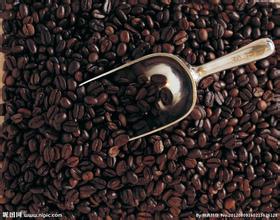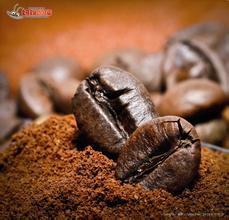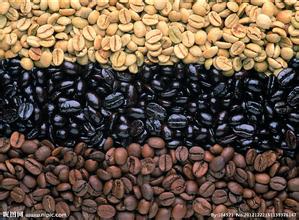Taste characteristics of Costa Rican Tarazhu Coffee by Flavor description
Tarasu, located in the south of the country's capital, SanJos é, is one of the country's most valued coffee growers. LaMinitaTarrazu coffee is a famous local product, but its production is limited, about 72600 kilograms a year. It is grown on a piece of land called LaMinita, which is owned by nearly three generations of the McAlpine family in the UK. In fact, this land can produce more than 450 tons of coffee a year. But Tarasu Latin American coffee is grown without artificial fertilizers or insecticides, and its harvest and selection are all done by hand. the reason for this is to avoid the damage to coffee beans caused to some extent by air jet selection. Costa Rican coffee is full of particles, ideal acidity and unique strong flavor. Costa Rica's coffee industry, originally controlled by the Costa Rican Coffee Industry Company (ICAFE), has been taken over by the official Coffee Committee (Oficinale Cafe). Among the exported coffee, those products that are considered to be of substandard quality are colored with blue vegetable dyes and then transferred back to China for sale. Coffee consumed domestically (dyed blue or undyed) accounts for about 10% of total production, and local per capita coffee consumption is twice that of Italy or the United States.
This coffee producer, with all grades and types of coffee, accounts for 1/3 of the global consumption and occupies a place in the global coffee market, although the natural disasters faced by Costa Rica are several times higher than those in other regions. but its acreage is enough to make up for high-quality Costa Rican coffee known as "extra hard beans", which can grow at an altitude of more than 1500 meters. Altitude has always been a problem for coffee growers. In addition, due to the high altitude drop caused by sufficient rainfall, is also very beneficial to the growth of coffee trees. However, while there are many advantages to growing coffee at higher elevations, the resulting additional transport costs must be taken into account, which is likely to make coffee production unprofitable. The coffee industry in Costa Rica has adopted new technologies to increase efficiency, including the use of "electric eyes" to select beans and identify coffee beans of irregular size.
First, we should seek financial support from the government and set up a "coffee trust fund" to help coffee growers with difficulties tide over their cash flow difficulties.
Second, vigorously develop high-quality coffee, increase the added value of coffee exports, and make up for the losses caused by the fall in coffee prices. Its main approach is to focus on the cultivation of high-quality coffee from 1000 meters to 1500 meters above sea level, prohibit the collection of immature coffee beans, strengthen the screening of coffee beans, and pay attention to the environmental protection ingredients during planting and processing.
From 2002 to 2003, Colombia produced 3 million packets of coffee (60 kg each) and exported 1.87 million packets of coffee. 40% of the coffee exported is high-quality refined coffee, which is known internationally as "GOURMET coffee". In the international market, refined coffee costs an average of US $93.61 per bag (46kg) (FOB), which is US $19.56 higher than that of ordinary coffee. I also have a kind of refined coffee, which sells for $800 a bag.
The main competitors for high-quality coffee in Colombia are Kenya, Guatemala and Ethiopia. Coffee production in Brazil and Vietnam is mainly in quantity, which is not enough to pose a threat to high-quality coffee in Colombia. In the next five years, my country plans to increase the export volume of high-quality coffee to 70% of all exported coffee.
Third, strengthen the export of high-quality coffee to Europe, the United States, Japan and other countries. European and American countries have high living standards, high consumption levels and high requirements for the quality of coffee. A cup of high-quality coffee can sell for $3.25 in Europe and the United States. My brother launched a strong publicity campaign for the European, American and Japanese markets. The offensive has spread to Russia. China has also been included in the future market for Colombian coffee.
Fourth, increase domestic coffee consumption and expand the domestic market. The survey found that there is very little coffee consumption in these coffee-producing countries, whether in Brazil, Colombia, Vietnam and Costa Rica. To this end, the Colombian coffee authorities are prepared to strengthen the development of the domestic consumer market and increase the publicity and sales of domestic coffee products while opening up foreign markets, so as to create a good space for the further development of the coffee industry.

- Prev

Guatemala Antigua Flower God Coffee Flavor description Grinding characteristics introduction of Variety production area treatment method
The coffee produced in Guatemala is one of the top coffee in the world, because Guatemala is a high-altitude volcanic terrain, and these volcanoes are the ideal places to grow coffee. Compared with other varieties of coffee, critics prefer this mixed flavor coffee with spicy flavor. The extra hard coffee beans here are rare and good coffee. They are full of grains, delicious and sour.
- Next

Taste characteristics of Bali Coffee Grinding degree introduction of high-quality coffee beans
Romantic Bali aristocratic Bali Coffee Bali Coffee is a tone, a harmony and a song. She is the beat of the waves on the coast of Kuta, the beat of Mozart drums and the chirping of aristocratic people in the cafe. Bali is one of the most beautiful and distinctive tourist attractions in the world, with its unique natural scenery, ancient civilization and uniqueness.
Related
- Detailed explanation of Jadeite planting Land in Panamanian Jadeite Manor introduction to the grading system of Jadeite competitive bidding, Red bid, Green bid and Rose Summer
- Story of Coffee planting in Brenka region of Costa Rica Stonehenge Manor anaerobic heavy honey treatment of flavor mouth
- What's on the barrel of Blue Mountain Coffee beans?
- Can American coffee also pull flowers? How to use hot American style to pull out a good-looking pattern?
- Can you make a cold extract with coffee beans? What is the right proportion for cold-extracted coffee formula?
- Indonesian PWN Gold Mandrine Coffee Origin Features Flavor How to Chong? Mandolin coffee is American.
- A brief introduction to the flavor characteristics of Brazilian yellow bourbon coffee beans
- What is the effect of different water quality on the flavor of cold-extracted coffee? What kind of water is best for brewing coffee?
- Why do you think of Rose Summer whenever you mention Panamanian coffee?
- Introduction to the characteristics of authentic blue mountain coffee bean producing areas? What is the CIB Coffee Authority in Jamaica?

